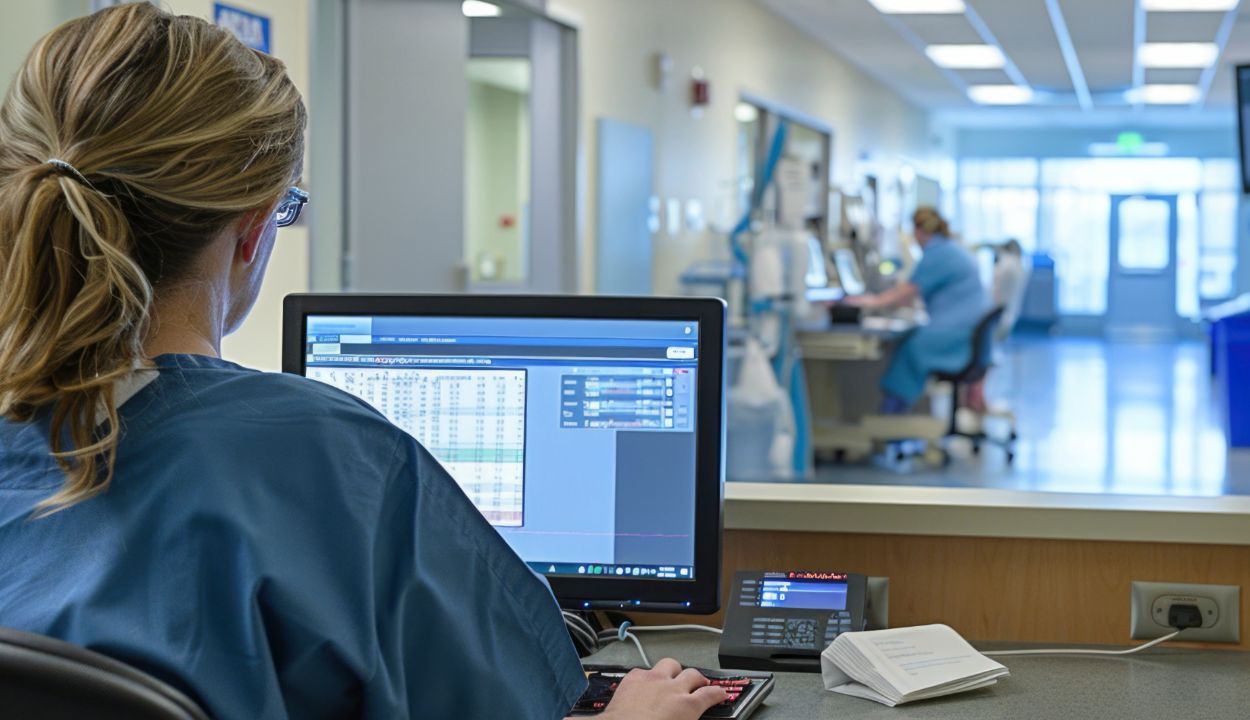Most every healthcare practice has a primary mission of providing outstanding care for a patient. However, the financial health of a practice is the foundation to sustaining a patient-focused mission for the long run.
It’s common for practices to focus on revenue cycle management, accurate medical coding, and timely payer reimbursements. But, for any healthcare group to thrive, it must incorporate today’s best practices in payment collections from patients. In fact, direct patient collections play a more important role than ever in maintaining financial stability.
A healthy dose of daily cash flow is critical for practices to cover the growing cost of overhead, and invest in facilities, equipment, and technology. For a practice to scale up with more providers and patients, it requires a dependable influx of predictable cash, and more of that cash is coming from patients.
In this article, we’ll explore the importance of patient collections in successful healthcare management and outline the following:
The Financial Impact of Patient Responsibility: We’ll define the increasing proportion of healthcare costs patients are responsible for and why collections are critical.
Benchmarking Your Collection Rate: We’ll discuss industry standards for patient collection rates and how to assess your practice’s performance.
Leveraging Technology for Efficient Collections: We’ll explore how technology can streamline the collection process and increase efficiency.
The Power of Patient Communication in Improving Collections: We’ll outline practical strategies to improve your collection success rate while maintaining positive patient relationships.
The Impact of Patient Satisfaction on Collections: We’ll talk about why satisfied patients are more likely to pay and how practices can gauge current levels of patient satisfaction.
Streamline Your Revenue Cycle and Boost Patient Collections with UnisLink: We’ll show you how UnisLink’s expert approach to RCM will rev up your practice performance for optimal revenue collections.
The Rise of Patient Financial Responsibility and its Impact
It’s not news to anyone in the healthcare industry that the patients’ portion of financial responsibility for their healthcare services have significantly increased in the last decade. Deductibles for employer-sponsored health plans keep ratcheting up. Deductibles for government-sponsored plans are growing. High-deductible health plans (HDHPs), while attractive with low monthly premiums, increase the co-pays for a growing burden on patients and practices.
AAMI (American Academy of Medical Illustrators) reports that on average, patient responsibility now accounts for 30-40% of a healthcare provider’s total revenue. (Source: AAMI) For some practices, this percentage can even be higher, depending on the patient population and insurance coverage.
Revcycle Intelligence recently published an article outlining patient financial responsibility accounted for about a fifth of total healthcare payments, but providers collected less than half of what patients owe for their services.
According to the Kaiser Family Foundation, the average annual deductible for an employer-sponsored health plan has skyrocketed by 232% from 2010 to 2023 for an average $1700+. Healthcare.gov plans are seeing on average, and depending on the state, $7481 for Bronze, $4890 for Silver, and $1650 for Gold plans. (Source: healthinsurance.org)
The higher deductibles are relevant in light of a new analysis from Kodiak Solutions that showed a clear line between what patients were more likely to pay and what amount they would avoid paying – and that line was $500 in 2022 and 2023. Meaning, when the amount is $500 or less, patients would likely pay their balance when asked.
Additionally, practices experience seasonal trends in patient collections and January and February are particularly tough due to the patient deductibles being reset for the calendar year.
All of this points to significant challenges that practices face when collecting balances due directly from patients.
A Patient’s Bill Payment Experience: By the Numbers
Considering patients are more responsible for their payments than ever, it’s interesting to note what kind of experience patients actually have when trying to pay their bills. A recent national health management group reported the responses from a proprietary survey of 1050 patients about their medical financial experience.
- 20% said they would rather go to the DMV than try to use an online portal to pay their medical bills.
- 38% said that the online payment options are confusing.
- 23% said they couldn’t understand how much they owe
- 24% said the information didn’t include an explanation of benefits with insurance information.
- 18% said they didn’t feel there was enough information to be confident in paying the bill.
All of this points to a major gap between people wanting to pay their bill and not having the tools to do it in a timely way.
Financial Impact of Patient Responsibility and Uncollected Revenue
Failing to collect patient payments can have a devastating impact on a healthcare practice’s financial health. Here’s how uncollected revenue can trickle down:
- Reduced Investment: Uncollected revenue directly limits a practice’s ability to invest in essential upgrades such as new medical equipment, advanced technology, and staff training. This can hinder the quality of care provided and negatively impact patient outcomes.
- Cash Flow Shortages: Unpaid bills create significant cash flow challenges. Practices may struggle to meet payroll obligations, pay for supplies, and cover operational expenses, leading to financial instability.
- Increased Operational Costs: Chasing unpaid debts is time-consuming and resource-intensive. Practices may need to hire additional staff or collection agencies, increasing operational costs.
- Delayed Payments to Providers: Uncollected patient payments can lead to delayed payments from insurers. This further exacerbates cash flow issues and can disrupt the overall financial health of the practice.
- Negative Impact on Practice Valuation: A high level of uncollected revenue can negatively impact the valuation of a healthcare practice if it’s considering a sale or merger.
In essence, uncollected revenue creates a ripple effect throughout the healthcare practice, impacting everything from patient care to the bottom line.
Benchmarking Your Collection Rate
Understanding your current collection rate is crucial to assessing your practice’s financial health and identifying areas for improvement. While industry averages can provide valuable insights, it’s essential to consider your specific practice type, patient demographics, and geographic location when benchmarking your performance.
Key Performance Indicators (KPIs) for Patient Collections
Beyond the overall collection rate, several other KPIs can help you gauge your collection efficiency:
- Days in Accounts Receivable (DAR): Measures the average number of days it takes to collect outstanding patient balances. A lower DAR indicates more efficient collections.
- First-Pass Collection Rate: Represents the percentage of patient balances collected on the first bill. A higher rate signifies effective upfront communication and billing processes.
- Patient Payment Plan Adherence: Tracks the percentage of patients who successfully adhere to payment plan agreements.
- Write-Off Rate: Measures the percentage of uncollectible patient balances written off as bad debt. A lower write-off rate indicates effective collection efforts.
Industry Benchmark Sources
While the Medical Group Management Association (MGMA) is a valuable resource, several other organizations offer benchmarking data:
- American Medical Group Association (AMGA): Provides data on various practice types and sizes, offering a comprehensive view of industry standards.
- Healthcare Financial Management Association (HFMA): Offers benchmarking data on a wide range of financial metrics, including patient collections.
- Private Revenue Cycle Management (RCM) Firms: Many RCM companies publish industry benchmarks based on their client data. UnisLink’s experienced RCM consulting team is expert at industry-wide benchmarks and can offer the latest information on how your practice can improve at collections.
Establishing Benchmarks for Your Practice
- Identify Relevant Benchmarks: Select benchmarks that align with your practice’s size, specialty, and geographic location.
- Analyze Your Data: Compare your practice’s performance to industry benchmarks. Identify areas where you exceed or fall short of expectations.
- Set Realistic Goals: Based on your analysis, establish an achievable collection rate and other KPI goals for your practice.
- Regular Monitoring and Evaluation: Continuously track your performance against benchmarks and make adjustments as needed.
By regularly benchmarking your collection rate and other KPIs, you can identify opportunities to improve efficiency, reduce bad debt, and enhance your practice’s financial stability.
Download UnisLink’s free e-Book and discover the 7 essential KPIs every medical practice should be tracking to optimize revenues, how to calculate each metric, actionable steps to improve, and how to compare your practice against industry standards.

Leveraging Technology for Efficient Collections
Newer, advanced RCM technology and smooth system integrations that help with patient collections are available for any size practice. But, too many practices are still not prioritizing the patient as a primary payer.
Practices continue to direct their RCM and billing teams to manage systems and processes that focus primarily on insurance companies as the payer of record for claim reimbursements. That’s fine, but practices also have hundreds of conversations each week with patients who are willing to understand and pay their bills on the spot. That requires a collaboration between both RCM and front counter operations teams.
The right technology with a high performing management mindset can be a game-changer in streamlining patient collections and improving efficiency. Technology plays an important role along with the patient-facing collections efforts.
Here are a few tech tools to consider:
- Electronic Health Records (EHRs) with Integrated Billing: Integrating billing into your EHR allows for faster and more accurate claim submission, reducing delays in receiving patient payments.
- Patient Portals: Empower patients to access their account information, payment history, and make payments online. This convenience can increase patient engagement and timely payments.
- Automated Payment Reminders: Utilize automated systems to send out timely reminders via email or text messages for upcoming payments or overdue balances. Personalization can increase the effectiveness of these reminders.
- Patient Estimation Tools: Leverage tools that accurately estimate and allow you to collect the patient’s full responsibility before rendering service.
- Predictive Analytics: Analyze patient data to identify trends and predict payment patterns. This information can help prioritize accounts and tailor collection strategies accordingly.
- Revenue Cycle Management (RCM) Software: Consider outsourcing your collection process to a specialized RCM company. These experts have the technology and experience to consult with your team on best practices to optimize collections.
The Power of Patient Communication in Improving Collections
Effective patient communication is the cornerstone of successful patient collections. By fostering open and transparent dialogue with patients about their financial responsibilities, practices can significantly improve collection rates and enhance patient satisfaction.
Pre-Service Communication
- Clear and Detailed Estimates: Provide patients with accurate and detailed estimates of expected costs before services are rendered.
- Insurance Verification: Verify insurance coverage upfront to avoid surprises and billing disputes.
- Patient Financial Counseling: Offer financial counseling to help patients understand their benefits and out-of-pocket expenses.
Post-Service Communication
- Timely and Accurate Billing: Send out clear and easy-to-understand bills promptly after services are rendered.
- Multiple Communication Channels: Offer various communication channels (email, phone, patient portal) for patients to inquire about their bills.
- Personalized Statements: Tailor billing statements to individual patient needs and preferences.
- Patient-Friendly Language: Avoid medical jargon and use clear, concise language on all patient communications.
Collections Process Communication
- Empathetic Approach: Train staff to approach patients with empathy and understanding, acknowledging their financial situation.
- Clear Payment Options: Clearly outline available payment options, including installment plans and financial assistance programs.
- Regular Communication: Maintain consistent communication with patients throughout the collections process, providing updates and reminders.
- Patient Portal Integration: Utilize patient portals to allow patients to view their account balance, make payments, and communicate with the billing department.
The Benefits of Effective Communication
- Improved Patient Satisfaction: Open and honest communication builds trust and strengthens patient relationships.
- Increased Payment Compliance: Clear communication about financial expectations leads to higher payment compliance rates.
- Reduced Bad Debt: Proactive communication helps identify potential payment issues early on, reducing the likelihood of bad debt.
- Enhanced Practice Reputation: A reputation for excellent patient communication can attract new patients and referrals.
The Impact of Patient Satisfaction on Collections
A satisfied patient is more likely to prioritize their medical bills, leading to improved collection rates. A positive patient experience fosters trust and loyalty, making patients more receptive to payment arrangements and more likely to pay on time.
A culture of patient-centric attention to satisfaction starts at the top, with executive leadership prioritizing the experience of all patients. Here are some key things practices should do to gauge patient satisfaction and work to improve it.
Measuring and Improving Patient Satisfaction
- Post-Visit Surveys: Implement post-visit surveys via text SMS to gather feedback on the overall patient experience, including billing and financial interactions. Patients are more likely to respond to text than email.
- Feedback Loops: Create a system for addressing patient concerns and implementing improvements based on their feedback. Offer feedback cards with QR codes that link to Google reviews and a form on your website. Direct feedback messages to executive management for follow up.
- Listen When Patients Talk: Create a safe communication track for staff to relay patient feedback they hear so that management can follow up.
- Patient Portals: Utilize the latest patient portal technology to enhance communication and transparency.
- Staff Training: Train staff on patient-centric communication and problem-solving skills.
By prioritizing patient satisfaction, healthcare practices can create a positive financial cycle where patients are more likely to pay on time, leading to improved cash flow and overall practice health.
Patient Collections Should be a Practice’s Top of Financial Priority
We’ve detailed why patient collections are a critical component of successful healthcare management. You can significantly improve your collection rates while maintaining positive patient relationships by benchmarking your performance and implementing best practices.
Technology can be a powerful tool in streamlining the collection process and increasing efficiency. By combining technology with effective communication and patient-centric strategies, healthcare practices can achieve financial stability and invest in providing high-quality care.
Streamline Your Revenue Cycle and Boost Patient Collections with UnisLink
Struggling with inefficient patient collections and a complex revenue cycle?
You’re not alone. Many healthcare practices face challenges in maximizing revenue and streamlining operations. This is where UnisLink comes in. UnisLink provides comprehensive revenue cycle management (RCM) solutions designed to optimize your practice’s financial health.
Here’s how we can help:
- Advanced Technology: We leverage cutting-edge technology to automate processes and improve efficiency.
- Expert Insights: Our team of experienced RCM professionals provides valuable insights to improve your collection strategies.
- Increased Revenue: Our services are designed to boost your bottom line by increasing collected revenue and ensuring timely patient payments.
- Streamlined Processes: We work with leading EMR/EHR and PM platforms, integrating our unparalleled RCM expertise seamlessly into your existing workflow.
- End-to-End Solutions: We offer comprehensive RCM solutions, from claims management to collections, ensuring a smooth and efficient process.
Don’t settle for stagnant revenue or a cumbersome revenue cycle. UnisLink’s guaranteed end-to-end solutions empower you to focus on what matters most – providing exceptional patient care.
Contact us today and count on us to help your practice thrive!


